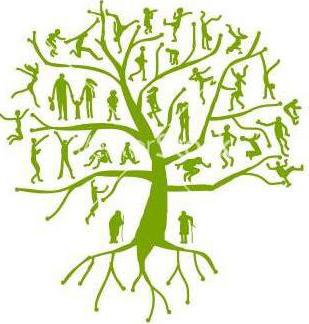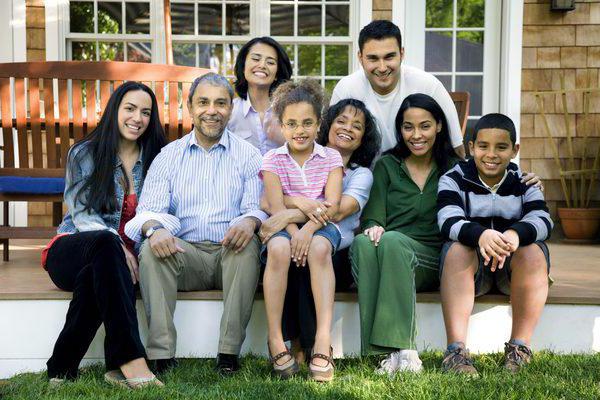Each person considers his close relatives a circle of persons of various sizes. It depends on the degree of closeness of people in the family, on personal relationships. However, when it comes to resolving legal issues, there is no room for subjective assessments and desires. The characteristics of the “close relatives” category in the Family Code of the Russian Federation differ from the provisions enshrined in legislative acts regulating other areas of society. What is the reason for this and in what branches of law is it necessary to establish family members? Consider below.
Foundation basis
This concept is governed by the Family Code. Close relatives (art. 14) are mentioned as one of the grounds, which is an obstacle to marriage. But what interests us is not the legal registration of the union of a man and a woman, but the basis for recognizing kinship. Therefore, we analyze only paragraph 2 of Part 1 of Art. 14 SK RF. The “close relatives” category of the Russian Federation Family Code includes grandparents, parents, children and grandchildren. That is, 2 generations in an ascending line and the same number in a descending line. Stepfathers and stepmothers, as well as stepsons and stepdaughters, do not fall under this definition. Despite the fact that these persons may be close to us in spirit and be considered family, without fixing affinity in legal documents, communication with them cannot be of a legal nature. In addition to these people, brothers and sisters also fall under the category of “close relatives” under the Family Code of the Russian Federation. They can be either full-bodied or come only from a common mother or father. Thus, not all family members are close relatives in the legal sense of this expression.
Main principle
The postulate of classifying individuals as close relatives is nothing more than consanguinity. It implies that between people there is a biological connection that naturally arises between ancestors and descendants, as well as between individuals descended from one progenitor.
Adoption
Despite the fact that the main and only characteristic of the biological proximity of people is consanguinity, in the legal sphere there are exceptions to this rule. In the modern world, the adoption institution has been widely developed. This fact cannot but rejoice, because many single children have the opportunity to find new parents and get the opportunity for full social formation and development. The adopted child is a close relative in accordance with the RF IC, as well as adoptive parents.
Proof of
As we found out, it cannot be confidently asserted that a biologically non-native person cannot fall into the category of “close relatives” according to the Family Code of the Russian Federation. In the legal field, evidence is needed to establish any circumstances, which are certain documents. During adoption, a new birth certificate is issued to the child, where virtually strangers will be recorded as mom and dad. In the same way, consanguinity cannot be a 100% guarantee of closeness in the legal sense of this concept.
The purpose of the definition
Determining who is rightfully related to close relatives is an important task. After all, the fall of a person into this category means the emergence of special rights and obligations, as well as in some cases, and responsibility. So, Art.67 fixes the right of close relatives to communicate with a minor child, and no one can take away this opportunity from them. In addition, people in this category may sue to demand the deprivation of parental rights by an unreasonable mother or father.
Code of Administrative Offenses
This legal act also uses the concept of “close relatives” in its text. In the Family Code, adoptive parents and adoptive children are not included in this circle of persons, which is a strange decision of the legislator. In the Code of Administrative Offenses, in the footnote to one of the articles, this oversight is corrected. Close relatives are mentioned in this act as impossible witnesses, because a person has the right not to report on members of his family.
Code of Criminal Procedure
In connection with the same reason, this category is also used in criminal law. But in the Code of Criminal Procedure, close relatives include not only blood relatives, but also husband and wife. Is this approach right? There is no unequivocal opinion on this subject in science. Perhaps, in order to ensure the legality of the criminal process, it is worth referring to this category of spouses. But in the RF IC, close relatives are referred to as people between whom it is impossible to marry, and therefore the interpretation of this concept in different codes is different.
Labor Code
There is no definition in this document for the concept that interests us, although it is used in Art. 128. It indicates that the employer has the obligation to grant his employee leave without saving the salary in connection with the death of a close relative. What kind of document should be consulted to establish whether Art. 128 TC in case of death of the spouse? If guided by the UK, it turns out that no. Is this a mistake of the legislator or a real state of affairs?
Housing Code
This document is noteworthy in that it captures the concept of family members. LCD refers to them not only close relatives in accordance with the UK, but also spouses. The main basis for classifying all these people as members of the family is their cohabitation.
tax code
Tax legislation is jointly with the family and does not include husband and wife in close relatives. Moreover, NK in its text uses not only this category, but also the term “family members”. This document fixes the rules that the profit received as a result of transactions between close relatives cannot be taxed, as well as income received by donation between these people.
findings
Thus, even in the legislation there is no consensus on the definition of the circle of persons that are members of close relatives. It seems most reasonable when resolving this issue to still be guided by the provisions of the RF IC as a fundamental document in the field of family law. However, in some cases, the generally accepted interpretation confuses people, as in the example with the provisions of the Labor Code on the obligation of the employer to provide five-day unpaid leave to an employee whose close relative has died. To the question of who to relate to this category, using the above article of the TC, the answer has not been found to the end. I would like the legislator to come to a common definition of close relatives for all branches of law in order to avoid confusion and misconceptions.



